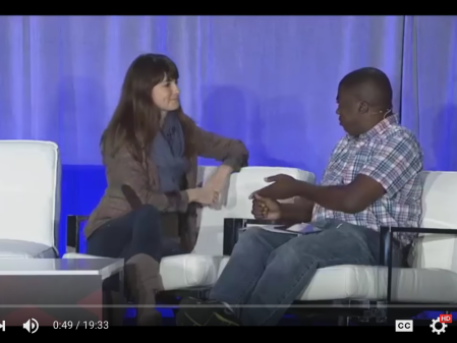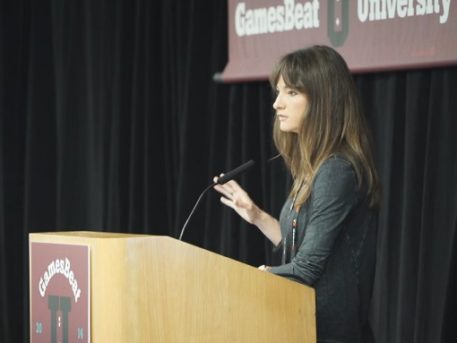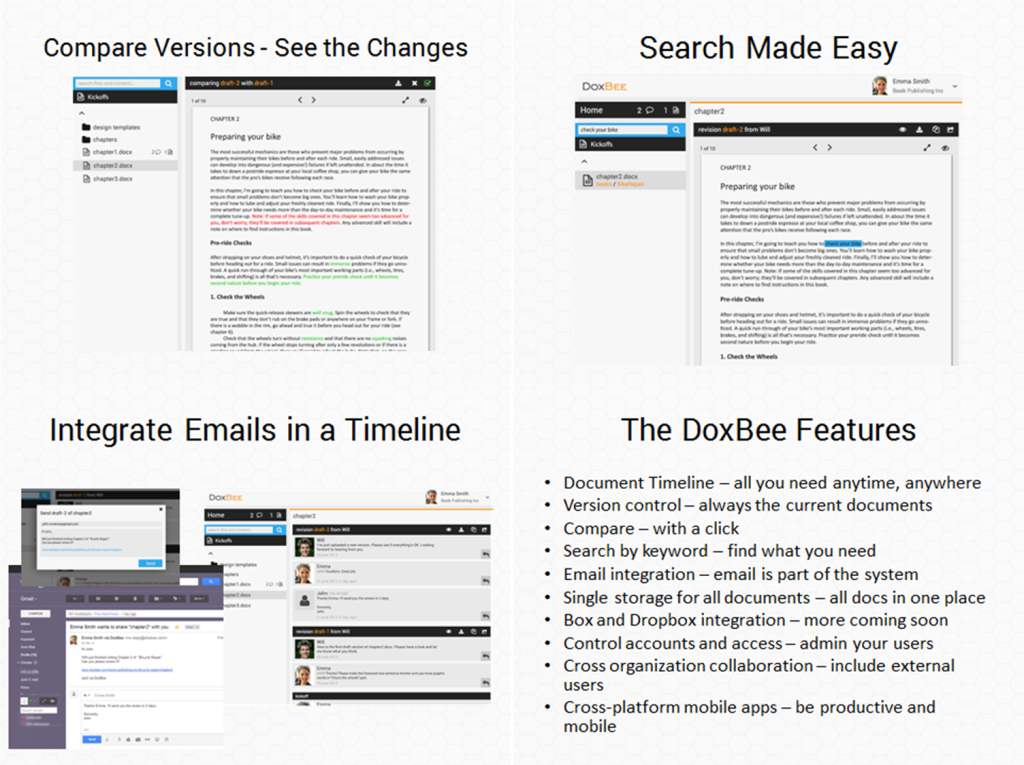You can find some great pitches on the internet, but what I wanted to know is how those pitches evolved to become what they are. Since I couldn’t find what I was looking for, and having just come back from Mind the Bridge Bootcamp, I’ll write about our personal experience.
I’ll talk about our initial pitch followed by the one we had after the weekend of intense mentoring sessions. Special thanks goes to James C. Roberts III, who generously took hours from his time to help us.
Tagline – what does your product do?
You can compare your product to another that people are familiar with. For us it’s something like Dropbox meets Mailbox meets Document Management System or even GitHub for documents. But once you do this, you’ll be recognized as the copycat. We didn’t want that and went with: “Collaborate on documents more efficiently.”
While opening with your product, you can inform the audience about crucial information about you and your startup. We said the following: “Let me tell you 4 important things about my company – we’re incorporated, we have seed funding, we’re in private beta and our team has already done this before.”
How does your product do that?
After the introduction, provide a statement of the most important aspects of your product — a thesis statement of sorts.
Here’s what we said: “We help you focus on what really matters when collaborating on documents and that’s writing. We’ll take care of everything else.”
What Problem Does It Solve?
The next slide should be the problem or the pain point your product solves. In our case there were several problems we’re addressing so we decided that we should skip it all together for now because it would take too much time. After all, we had only 5 minutes to do the presentation, so spending more than 15 seconds on the problem wasn’t an option.
Product Features
We had five slides in version one of the presentation. We jumped straight into the key features, with each slide showcasing one of the key features of the system, and the last one is a summary of all of them. But this didn’t help the audience understand what the product does. Most of them thought of Google Docs, but couldn’t see the difference. The thing with DoxBee is that it’s a little different from other products in the sense that it’s a combination of key features that makes document collaboration more convenient, and we needed to point that out.
Hence, we changed it to this.
Only when the audience became familiar with it, we got into the specifics of each key feature. Since we noticed that most of the mentors associated DoxBee with Google Docs, we used this slide to explain the differences between the products in one sentence, before getting into explaining ours.
We ditched the slide with the list of features entirely since it only confused the audience.
Now, after explaining the product, we told them where we were.
Where are you?
We’ve included a word or two about the possible future milestones. This is very important. First, you need to tell them that you’ve thought of the future of the startup and where you want to go with it. You will need the money for getting from milestone A to milestone B. So, think hard about this one.
Market size
We’re targeting a broader audience and that’s not a good thing in investors’ eyes. Try to focus on your niche and provide numbers. Aim to a total market size of billion dollars.
Competitors: Who are they and what are you doing differently?
When you establish the fact that there’s a huge market potential, you need to explain the obstacles to reaching that potential. Usually, this is a comparison table between your startup and the competitors. That’s OK, but, in our case, there are lots of competitors and the audience is familiar with this fact. That’s why we pointed out two key differences: “There a number of companies in the space. Tens of them. But they all have two crucial differences – they make users learn new workflows and they keep them in a closed system.”
How will you make money?
The next part is about how you will monetize. For us, it’s from subscriptions from enterprises of all sizes. This is one of the key slides for potential investors. Remember, they know it’s still early to know this, but you need to prove that you have some ideas. Here’s what we’ve said: “It’s still early to talk about pricing but we’ll have SMEs and large enterprise packages. We’re going to test them and determine the prices once we have a product market fit.”
If we had a price and a little more data about users, then we’d follow up with the finances. There should be a hockey stick graph with revenues and expenses for the next five years. The numbers should be rounded. Make sure that you have at least some ideas on the KPIs.
Team: Who are you and why should we trust you with our money?
As many of our mentors said, the team is one of the strongest parts of a startup. I’ve also read and heard this numerous times before, the team is what matters most. Ideas can change, but teams rarely do.
Here’s a quote from one of the mentors: “Do you know who gets funded in Silicon Valley? Serial entrepreneurs, even failed ones.”
That’s why we have two slides for the team. The first one is with the individual accomplishments or impressive facts about a person. It should be one sentence summary. The second slide consists of the credentials. There’s usually text here with smaller fonts. But, on these slides, that’s OK. I even asked, if I should I put a university that nobody knows about onto these slides. The answer was: “Yes, nobody cares.” So, go ahead and put your credentials even if you didn’t study in Stanford.
At the end, remember that pitching is about reducing the risks for potential investors. If you can convince them that you thought thoroughly about your business although you don’t have all the answers you’ll get much better terms and close the deal faster.
























